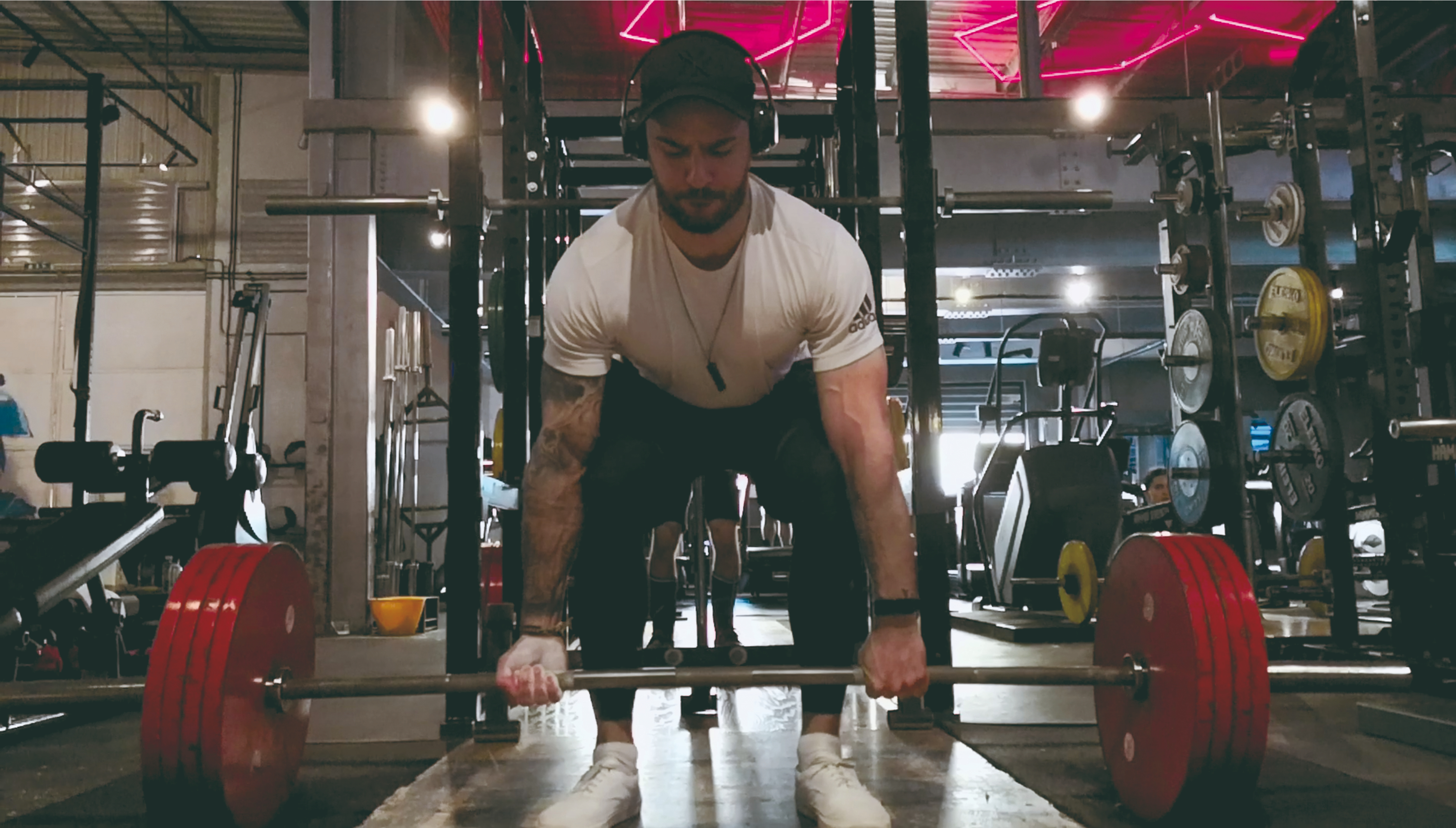
Sport360°’s Alex Rea has teamed up with the guys at Desert Barbell to embark on a six-week powerlifting challenge, working alongside industry experts ahead of his first ever competition – Powermeet 5.0. It’s week six and the comp is just days away. With that in mind, we take a look at the biggest lessons learned while in Coach’s Corner with DB co-founder Patrik Hedqvist. This time, the Swede goes through how a comp day should shape up.
One day and just nine reps remain. The preparation is over, the hard work done and now it’s go time.
On Friday at the Park Inn by Radisson in Dubai Motor City, I’ll take to the platform for a maiden competition and there is zero consternation because ultimately, the only person who cares about my lifts, is me.
That humbled mindset has been one of the many takeaways from this challenge and so given the myriad of benefits the sport has opened up to me, here are three lessons learned from the last six weeks.
Discipline
Probably the most obvious and certainly the standout, but remaining disciplined to a style of training largely alien was absolutely crucial.
Admittedly, it has been difficult staying away from the physique side of things (what I really mean by that is ‘bro lifting’), neglecting bicep curls and the 10-12 rep scheme.
But given the demands on your body and central nervous system, it is practically impossible to deviate away from a powerlifting program.
It is a punishing form of training because previously, squat, bench and deadlift are movements which would have been performed once a week each, sometimes light, sometimes heavy.
In this block, it’s 3-2-2 and so resting is as important as the actual training. You need to be on top of your game to apply maximum force for every single lift and that can only be achieved through discipline.
Technique
As mentioned before, checking the ego was fundamental mindset to take into this challenge.
It genuinely is not about what you lift, but about how you lift. What I have found, and no doubt many others, too, is that the key to unlocking potential is to dedicate yourself to technique.
There is only so far a hunched back on deadlift, poor spine positioning for squat or no leg drive on bench press will get you.
To acquire good technique, though, you require two cornerstones. One is a genius coach and I am very grateful to Patrik for his wisdom throughout this process, and the other is patience.
Trusting the program and embracing changes in technique which initially meant a step down in strength, was the only route to improved lifts.
The tangible proof will come on competition day, though.
Warming up
This might seem very mundane and probably to a lot of people, self-explanatory as well. However, one of the biggest blind spots of my training has been warming up adequately.
It’s just something which hasn’t seemed that necessary, but for powerlifting it’s so essential.
Ensuring you’ve stretched out your soft tissue muscle and activated the areas under most stress, particularly the hips, helped smooth progression into the working sets.
Previously, by the time I’d reached the top set, I’d feel loose but beforehand it would be a struggle.
Dedicating 15-20 minutes to a routine before the lifts helped to ensure from the very first rep, my body was engaged and ready to work.
COACH’S CORNER WITH PATRIK HEDQVIST (@borjetheswede)
After struggling for months, sometime years, its finally time for that competition day.
So…what do I do? Well, there are a few very easy pointers to follow and if you keep to them it will be just fine.
Lets assume it´s a normal two-hour weigh-in. That means, for example, that your weigh in can be scheduled 07:00-08:30 and that your lifting group starts at 09:00.
The ideal method is to, of course, weigh in as soon as possible to give yourself time for a breakfast before relaxing and starting the warm-up for squats. The order of lifting is; squat, bench press and deadlift and normally 10-12 lifters in each group.
This will mean at least six-eight minutes between lifts and normally also 45 minutes before benching then begins.
Powerlifting may be an explosive sport when you are under the bar, but in time aspects more like cricket. A full flight, of two groups, will take approximately five hours.
So here are a few things to consider:
1. Do NOT stuff yourself with food you don’t normally eat. Keep normal routine and don’t eat too large portions, either. The time before warming up is not very long.
2. Keep energy levels up through the comp with easy to consume foods like; bars, fruits, chocolate or yogurt. There is no time for a full on lunch meal.
3. Do not go crazy with caffeine before the squat. Remember you need to keep going for four-five hours and the high intensity focus is spread out. If you’re using any energy drink/mixture, coffee or caffeine pills, use less than usual and focus it around the warm-ups (remember that caffeine takes about 40 minutes to reach peak value).
4. This should really be point number one… CHOSE HUMBLE STARTING WEIGHTS. Being too ambitious with the first weights is always a great way to get into trouble. The numbers 92-97-102 gives some guidance and represents percentage of your one rep max and in this case lift 1-2-3.
There are many individual differences, but that’s a decent framework to have as base. If you have done your training and stick to the above, chances are your competition experience will be a great one and you will come back for more meets.